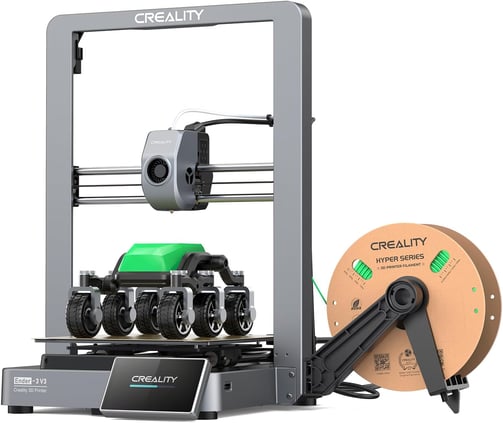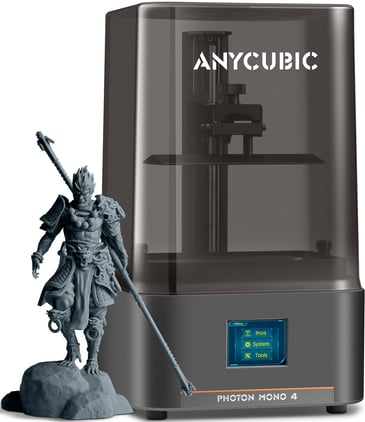Mastering FDM vs. SLA: Which 3D Printing Technology is Right for You?
When it comes to 3D printing, it’s easy to get overwhelmed by the different technologies available—especially when names like FDM and SLA start being tossed around like acronyms at a tech convention. But no worries! Whether you're a seasoned maker or just dipping your toes into the world of 3D printing, understanding the differences between FDM (Fused Deposition Modeling) and SLA (Stereolithography) is crucial in choosing the right printer for your needs.
3D PRINTING


Let’s dive in and see which tech fits your project style—whether you’re building a miniature army or creating prototypes faster than you can say, “layer height adjustment!”
FDM: The Workhorse of the 3D Printing World
FDM is often the first technology most people encounter when they start 3D printing. Why? Because it’s accessible, relatively affordable, and versatile. Think of it like the reliable friend who always shows up for game night—maybe not the flashiest, but you know it’ll get the job done.
How FDM Works
In FDM printing, plastic filament (usually PLA or ABS) is heated and extruded through a nozzle in layers. The printer builds objects from the bottom up, making it great for printing functional prototypes, custom parts, and, of course, all those tabletop miniatures.
Pros of FDM
Cost-effective: FDM printers are generally more affordable than SLA printers. Filament is also widely available and relatively cheap.
Durability: FDM-printed objects are typically sturdier and better suited for functional parts.
Material Variety: From wood-infused filament to flexible TPU, there’s no shortage of filaments to experiment with.
Cons of FDM
Surface Finish: While FDM prints are strong, they can have visible layer lines, meaning extra post-processing may be needed to achieve a smooth finish.
Resolution: FDM isn’t as detailed as SLA, especially when it comes to intricate designs like fine figurine details. But hey, nothing a little sanding won’t fix, right?
Who Should Use FDM?
If you’re a hobbyist looking to print practical, durable objects—or you’re working on a budget—FDM is your go-to. It’s perfect for larger prints like cosplay props, functional parts, or sturdy miniatures. For example, if you’re thinking of printing that epic D&D terrain piece, you might want to stick with FDM.
Check out the Creality Ender 3 V3 for a reliable and budget-friendly FDM printer—perfect for beginners and seasoned makers alike!
SLA: The Master of Detail and Precision
Now, if FDM is the trusty workhorse, SLA is the high-maintenance friend who shows up in a tailored suit. It’s known for its insane detail and smooth finish, making it ideal for artists, jewelers, and anyone who really wants their prints to scream “professional quality.”
How SLA Works
SLA printers use a laser to cure liquid resin, layer by layer, to form the final object. The result? Prints that have incredibly fine detail, making SLA perfect for miniatures, detailed figurines, and anything requiring high resolution.
Pros of SLA
High Resolution: SLA prints have a smooth surface finish and capture fine details much better than FDM. Say goodbye to visible layer lines!
Detail-Oriented: Perfect for intricate designs, figurines, and jewelry-making.
Cons of SLA
Price: SLA printers and resin tend to be more expensive than FDM setups, so it’s a bit of an investment.
Durability: SLA prints are more brittle compared to FDM prints, so they’re better suited for display pieces rather than functional parts.
Post-Processing: Get ready for some extra steps—SLA prints need to be cleaned in alcohol and cured under UV light.
Who Should Use SLA?
If you’re an artist, designer, or miniatures enthusiast looking for stunningly detailed prints, SLA is your best bet. It’s also perfect if you’re creating small, intricate models for tabletop games or even working on jewelry designs.
For high-detail printing, take a look at the Anycubic Photon Mono 4 - an excellent SLA printer for those who want precision without completely breaking the bank.
FDM vs. SLA: A Quick Comparison
Cost
Print Quality
Speed
Durability
Material Variety
FDM
Affordable printers and filament
Visible layer lines, sturdy
Slower on fine settings
Strong, functional
Wide range of filaments
SLA
Higher printer and resin cost
Smooth surface, high precision
Generally faster for detailed prints
More brittle, detailed display pieces
Limited to resins
Which Should You Choose?
Go FDM if you want an affordable, versatile option for functional parts, props, or larger models.
Choose SLA if precision and detail are key for your projects—especially for creating intricate miniatures or fine art pieces.
At the end of the day, there’s no wrong answer—it all depends on your specific needs and what you’re looking to create. Whether you’re printing D&D figures or prototyping a new gadget, FDM and SLA both offer unique benefits.
Bonus Tip: If you’re feeling adventurous, why not have both? There’s no rule saying you can’t mix and match technologies depending on your project. After all, more tools mean more possibilities (and fewer excuses)!
Our recommendation
Consider combining the Creality Ender 3 V3 with the Anycubic Photon Mono 4 to cover all your bases - strength and detail, all in one workshop.
Creality Ender 3 V3
Fast and stable FDM printer
Anycubic Photon Mono 4
High precision SLA printer
Conclusion
In the FDM vs. SLA showdown, the winner is...well, it depends! Whether you need sturdy, functional prints or high-detail miniatures, each technology has its strengths. Just remember, no matter which path you choose, you’ll be one layer closer to bringing your creations to life -one print at a time.
And hey, if all else fails, remember: When in doubt, print it out!








